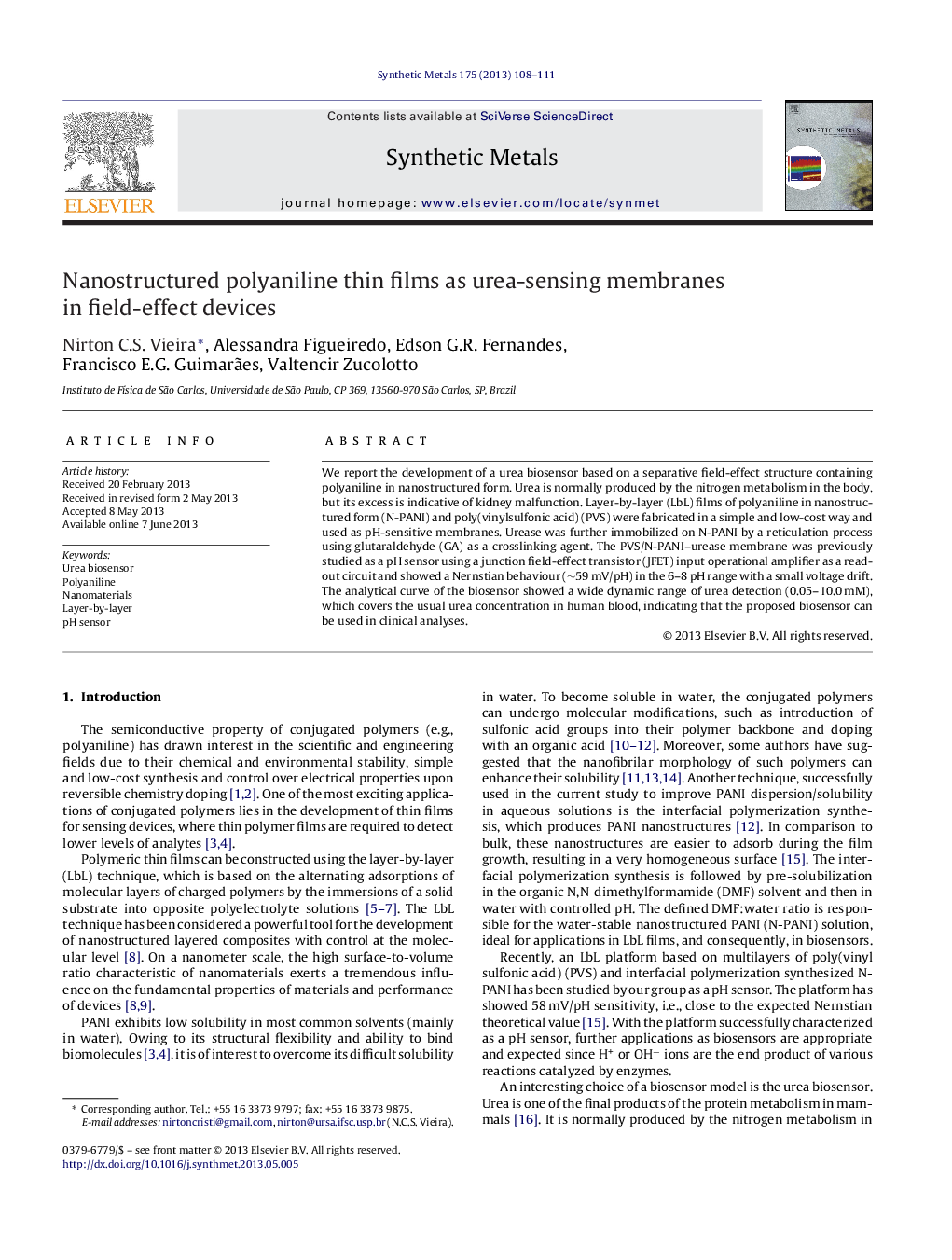| Article ID | Journal | Published Year | Pages | File Type |
|---|---|---|---|---|
| 1441360 | Synthetic Metals | 2013 | 4 Pages |
•LbL films containing nanostructured polyaniline were fabricated in a simple way.•Urea biosensor was constructed using urease immobilized on nanostructured polyaniline.•The system showed an excellent sensitivity to pH and urea with a small voltage drift.•A large dynamic range of urea detection was achieved.•The proposed biosensor can be used in clinical analyses.
We report the development of a urea biosensor based on a separative field-effect structure containing polyaniline in nanostructured form. Urea is normally produced by the nitrogen metabolism in the body, but its excess is indicative of kidney malfunction. Layer-by-layer (LbL) films of polyaniline in nanostructured form (N-PANI) and poly(vinylsulfonic acid) (PVS) were fabricated in a simple and low-cost way and used as pH-sensitive membranes. Urease was further immobilized on N-PANI by a reticulation process using glutaraldehyde (GA) as a crosslinking agent. The PVS/N-PANI–urease membrane was previously studied as a pH sensor using a junction field-effect transistor (JFET) input operational amplifier as a readout circuit and showed a Nernstian behaviour (∼59 mV/pH) in the 6–8 pH range with a small voltage drift. The analytical curve of the biosensor showed a wide dynamic range of urea detection (0.05–10.0 mM), which covers the usual urea concentration in human blood, indicating that the proposed biosensor can be used in clinical analyses.
